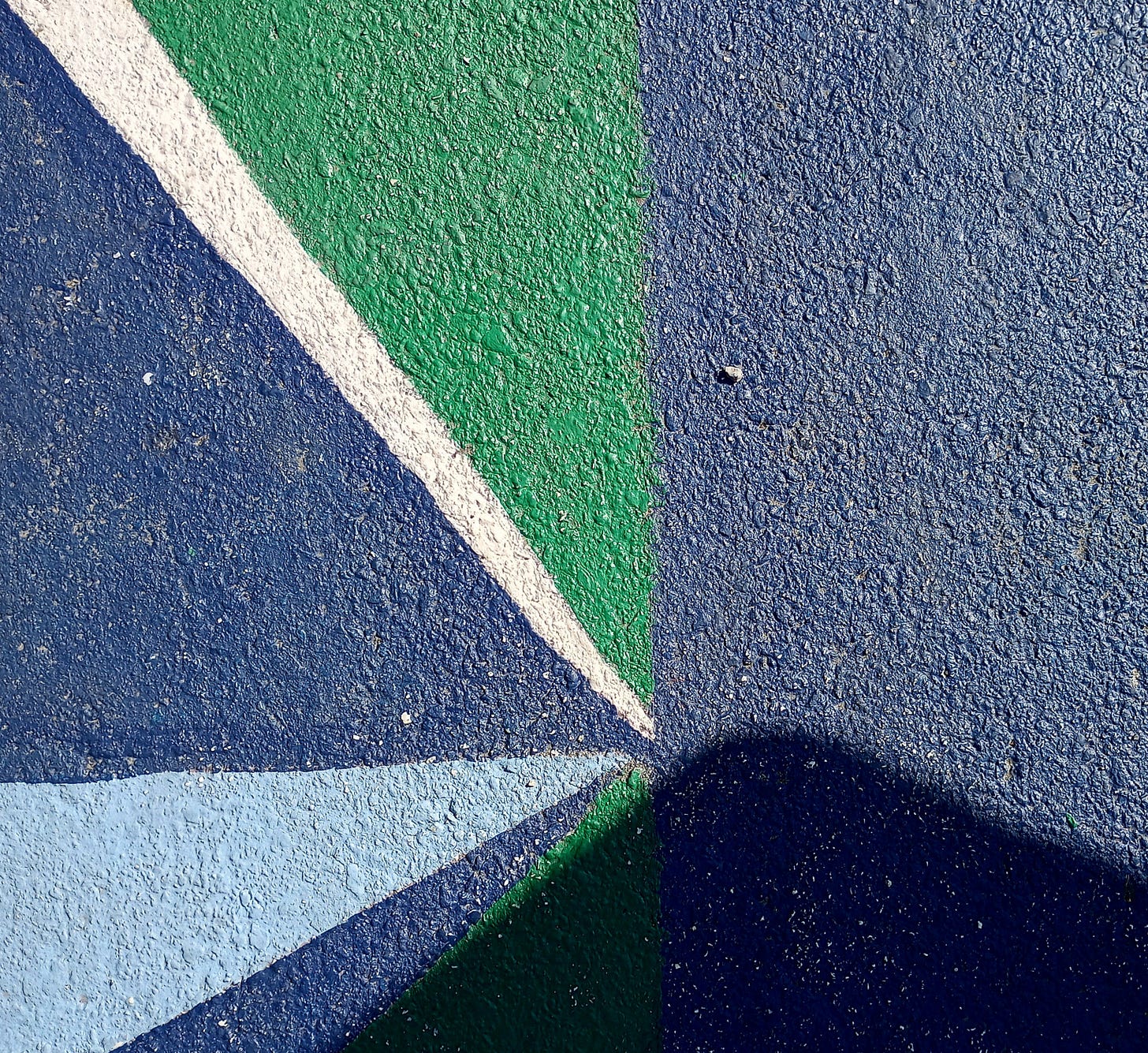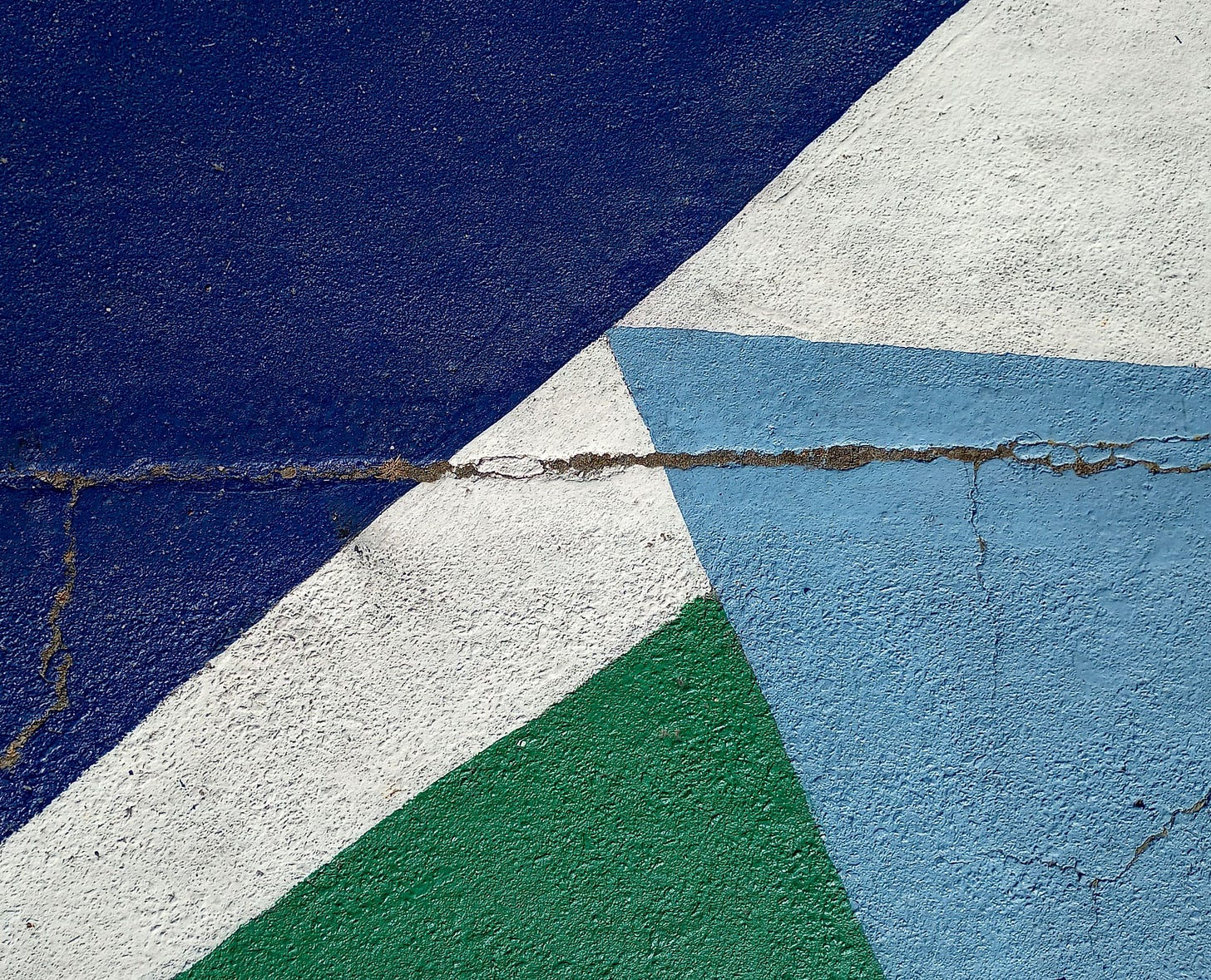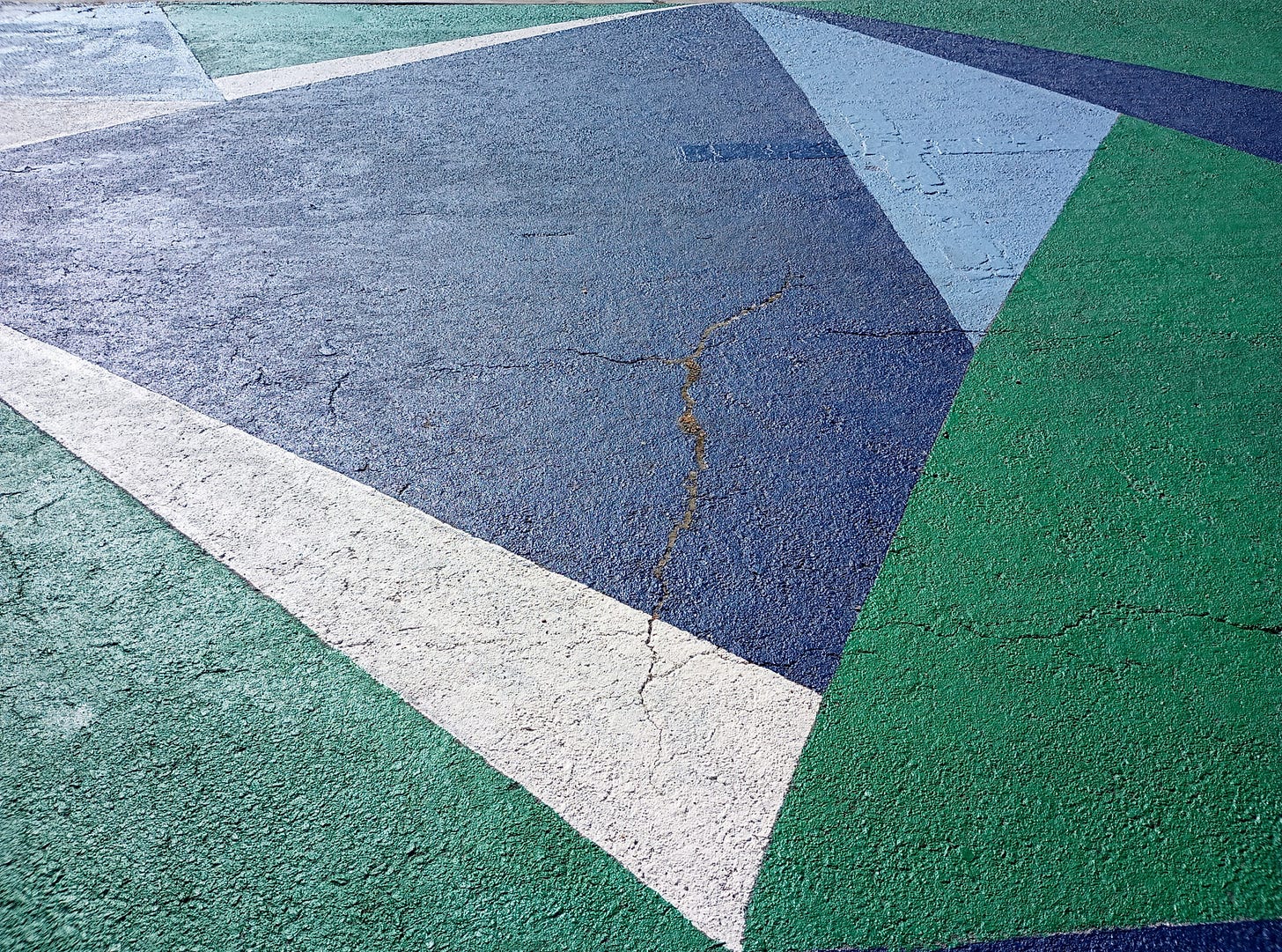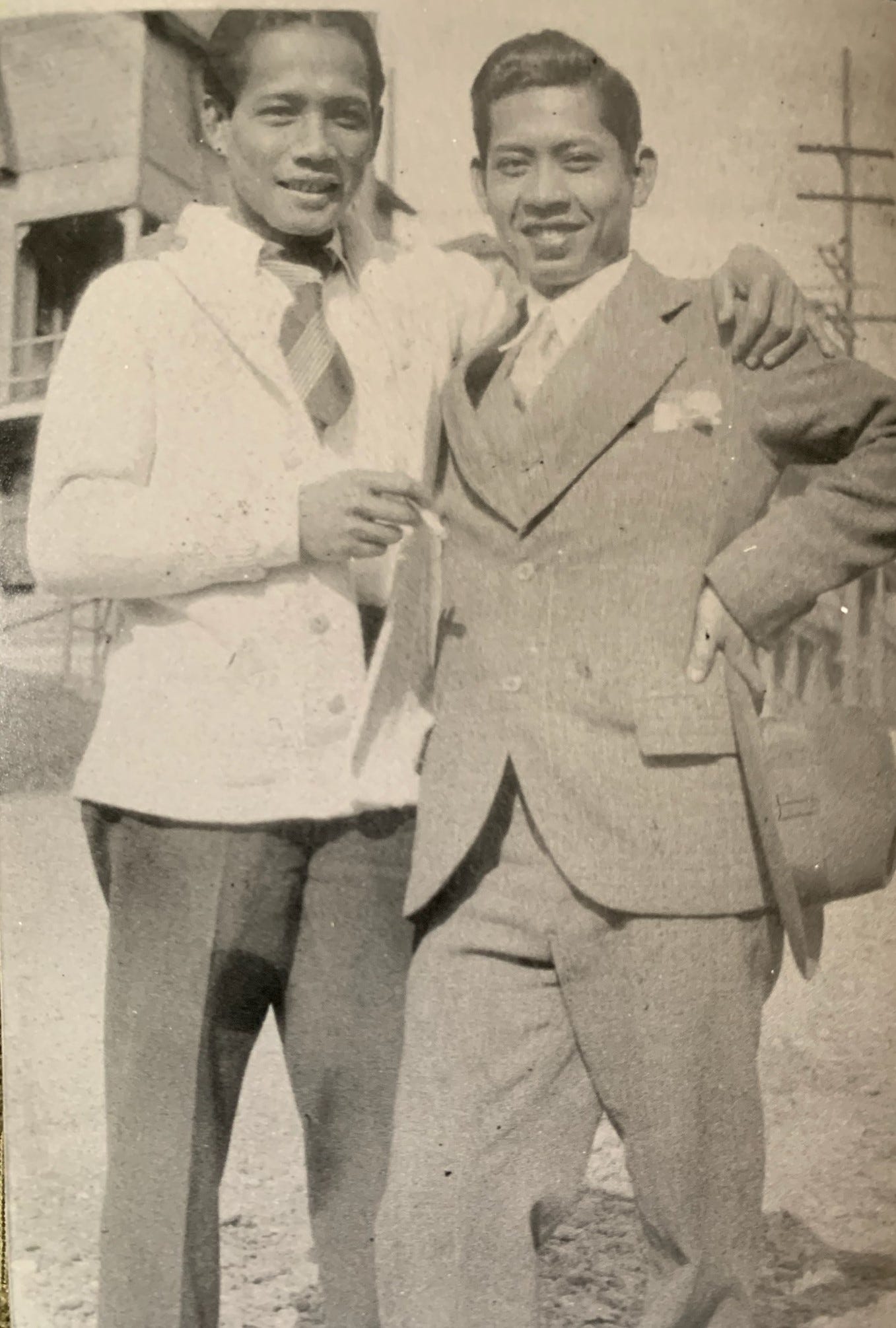Remembering and Letting Go
#144: Andrew Lam & Binh Danh, Jean Vengua & Elsa Valmidiano (Halo-Halo Review), Lia Pas, Duane Toops, Samir Arabzadeh, Eva Pacheco, et al.; Valerie June, thelotradio (Takuya Nakamura), & Meute
CAFE SCENE
This afternoon, I picked up a prescription downtown, and then bought myself a tea and chocolate croissant at Plumes, a local cafe that sits on the corner of one of the busiest intersections in Monterey. Reading while eating: one of my favorite things to do. It was fairly busy with customers coming and going through the cafe’s two entrances, one on Alvarado St., and another on Franklin St. A young Filipino guy came in, grinned at me in that “I see you, Pilipino!” kind of way, and later decided to sit near the end of my communal table with his laptop. Shortly thereafter, his tita1 came in and they started catching up on family gossip.
It was pretty noisy, and I wasn’t getting much reading done. I wasn’t irritated, though; it was too interesting just checking out the people walking outside or into the cafe. The sidewalk in front seems to regularly serve as an impromptu living room; five old guys were hanging out on cafe chairs, shootin’ the shit next to the statue of the accordionist; the proprietor didn’t seem to mind. Then, around 3:30, a cop on a bicycle stopped at the corner and started directing traffic. A band with baton twirlers, trumpeters, drummers—the whole shebang—came loudly marching by, followed by a firetruck flashing its lights and sounding its horn. Members of the local high school basketball team were perched on top of the truck, grinning and waving—clearly celebrating a win.
I gave up on reading and decided to start walking back up the hill toward home. I stopped near Middlebury Institute and took some photos of a section of the painted street that the college had closed off to traffic to serve as a block-long patio for the students. Three views:
THEN & NOW
After reading “Memories Lost and Found” (see article in Rabbit Hole, below), I started thinking about objects that hold memories and histories—the stories they tell, the sense of loss they can produce—although, over time, I think they can also stimulate a sense of presence and creativity. In my case, the objects, or lack of them, have included my father’s photo album, which he discarded back in the early 1990s. I was attending college in Berkeley, but staying briefly at my parents’ home. One day, I entered the house to find my parents quite upset about an argument which, as usual, they did not discuss with me. Dad had walked out of the house in a huff. Knowing his eyesight was bad from glaucoma, I went out in the car to fetch him, and found him miles away, heading towards downtown. A few days later, I realized that his old photo albums were missing, likely picked up during trash collection day.
It was not until I took some classes in Asian American history that I began to realize the significance of such photographs; the loss of Dad’s album was painful for me, especially since he tended to be reticent about his past, though there were hints that, while full of toil and hardship, it was also adventurous, and at times dangerous. The disappearance of the album happened around the time that he was beginning to experience dementia. Several years later, Dad could remember his name, Nick, but (distressingly to him, as well as his family) the persona linked to the name was missing and could not be found. He could, however, remember songs and lyrics from his band days—and spent some of his last days in bed, quietly singing to himself.
OK, here’s what I remember of that photo album. It contained images of:
a band from the 1930s called the Royal Hawai’ians—although the band members were Filipino (Hawai’ian music was all the rage in the U.S. at the time). My father was the guitarist. They performed in New Orleans and were even broadcast on a radio show from the rooftop of a hotel;
a couple of my father’s old girlfriends from the Philippines. I think at least one of them was dressed like a nurse. The other looked like she could’ve been a teacher. They both looked oddly sober in comparison to my mother, who sewed her own clothes, once owned a hair salon in Manila, and tended to dress fashionably, even a bit flamboyantly;
Dad in the 1920s and 30s when he worked in the Alaskan fish canneries;
Dad standing with his brother, Miguel, or his kababayan2 in places like Alaska or Seattle, near docks and canneries;
Dad and fellow workers on merchant marine ships, or standing on the docks.
Here’s one of a handful of photos that survived. Dad (on the right) looks a little tipsy here. In my imagination, this is set in the Pacific Northwest. It’s the weekend, and they are dressed to party. The guys have just emerged from a bar and they are in high spirits.
RABBIT HOLE
“Memories Lost and Found,” a moving essay by Andrew Lam, with images by artist and daguerreotypist Binh Danh (in Literary Hub). A couple years ago, I was honored to have my image daguerreotyped by Binh Danh for his show focusing on the residents, workers, and other people involved with Salinas Chinatown. The image has been enlarged and is actually up on an exterior wall on Soledad St., along with images of several other people.3
I wrote a foreword to The Beginning of Leaving, by Elsa Valmidiano, published recently in Halo-Halo Review, #17 (April 2024). In the same issue is Valmidiano’s essay, “How Not to Drown,” which reminds me of my youthful efforts to swim and bike; maybe in my old age I need to confer with my ancestors . . .4 But don’t stop there—check out the many other essays, reviews, and critical engagements in this online “mangozine,” including writing by Tony Robles, Leny Strobel, Vicente Rafael, and Michael Caylo-Baradi. Halo-Halo Review is edited by author and artist Eileen Tabios.
I’ve posted a link to Lia Pas before, but I didn’t know she had a newsletter on Substack. Check out her posts on The Slowest Thread, especially “Tea and Sung Memory” and her thoughts on immune systems, vulnerability, and the visceral and empathic self. She also brings up Gabor Mate’s book When the Body Says No, something I also read recently.
In “Unexpected Things,” Duane Toops speaks the truth that artists often don’t really know why they choose one mode of working over another. This is one reason why I question the practice of writing “Artist Statements.” Are they not just fictions describing a fleeting moment, likely to change? Another post, “Joy, Wonder, Mystery” is definitely worth reading, especially if you ever wonder about this endless treadmill of achievement society sets before creatives.
Samir Arabzadeh’s film, Powernappers’ Paradise, wonders what’s up with Filipinos sleeping at work in the Philippines? The scenes of people sleeping and breathing deeply makes me relax and feel like sleeping, too. I am reminded of a time in my life when I worked for a Chilean furniture illustrator. I would pencil the “foundation” drawings; he would finish them with ink and watercolors, sign them with a flourish, and mail them off to his clients in NYC. Around noon, he would insist I go home for siesta and return refreshed several hours later—more or less—to finish my drawings. The program worked very well!
Crochet street canopy in Alhaurin de la Torre (Malaga, Spain), by Eva Pacheco and her students (all local women over the age of 50): In the voice-over video below, Thyme Weaver sits down with Eva Pacheco under the canopy to discuss the project.
SOUNDINGS
West Tennessee singer-songwriter Valerie June performing “Shakedown“:
You never know what will be playing (and what you’ll see)5 on thelotradio.com live from Brooklyn, NYC. Thanks to the Mysterious M for turning me on to this independent station which features morning-to-midnight live-streaming on video. The DJs do their thing in a shipping container with a window through which fans and passers-by can view them. Last Wednesday, I tuned in and a guy with dreads was on the screen prying open a suitcase that had branches sticking out of it. He took out two metal files (the kind you sharpen knives with), and started playing a spoken word poetry track while improvising sounds with the files.
Six months ago, when I was the most depressed about my dull freelance work, I passed by that magical little triangular empty lot in Williamsburg that has an insane view of the city and I noticed a 'for lease' poster. I pass by this place everyday on my way to work, but that day the poster was up. Two minutes later it came to me like a flash: I'm going to rent that magical space and I'm going to set up an online radio station to give a platform for all of the incredible talent that I've witnessed in the past five years in New York City. Since that day I've literally been obsessed with making this idea come to life. — Francois Vauxelaire
Below is multi-instrumentalist and composer Takuya Nakamura at thelotradio.com. He brought his trumpet to this session:
Meute, a “techno“ marching brass band performing “Aurora” at the Sternbrücke, an inner-city railroad bridge in Hamburg, Germany that is due to be demolished, along with the small businesses around it. I had a hard time picking one of Meute’s videos for this spot, because they are all so good. This one is beautifully filmed, too.
Thanks for reading Eulipion Outpost! Special thanks to readers who have donated here on Substack or in my Ko-fi page to support my efforts!
My Links List is now on an old-school Neocities site that I built.
Eulipion Outpost is a reader-supported publication. To receive new posts and support my work, consider becoming a free or paid subscriber.
Tita: auntie.
Kababayan: town mates; homies.
It’s kind of a strange feeling for me to have that up there; not sure what to think about that!
Despite every effort of my mom to make me a princess—briefly succeeding when she groomed me to be a 13-year-old “beauty queen”—I behaved mostly like a “tomboy.” Someday I’ll tell more of that story.
I checked in on their livestream the other day, and one of the DJs was dancing about and baring his chubby bum for all the world to see, so—consider this a content warning!






